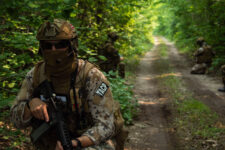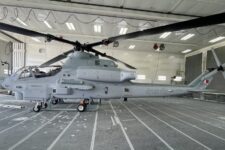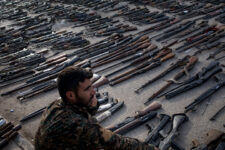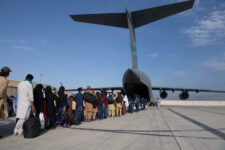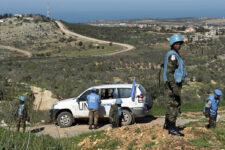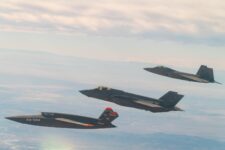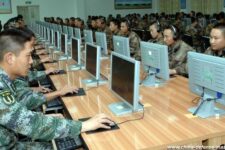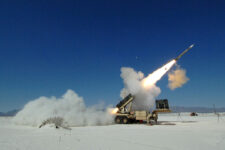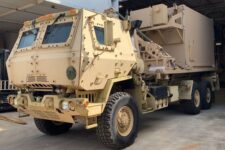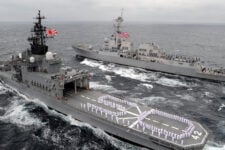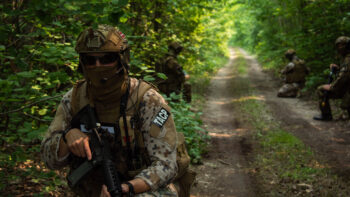
The Atomic Energy Commission detonates the first thermonuclear device, code-named “Mike,” at Enewetak Atoll in the Pacific.
Bob Butterworth knows nuclear weapons. He know cyber weapons. He knows space. He knows intelligence. And Butterworth cares enough to take public risks, to speak plainly in hopes others will do the same and thus help the country find the best answers to tough problems. While the American public has little idea it’s happening, a vigorous debate is underway among the White House, the nation’s military leaders, the Navy and Air Force — guardians and users of our nuclear weapons — and the Energy Department — maker and maintainer of the weapons — about how many nuclear weapons we need and whether they should be delivered using submarines, intercontinental ballistic missiles (ICBMS) or bombers and in what mix thereto.
This is not an academic exercise. Tens of billions of dollars are at stake. Our allies depend mightily on us for the nuclear umbrella we allow them to operate under. When the Air Force lost some nuclear weapons a few years ago, our allies immediately demanded to know just how secure the weapons were and how this might affect our ability to wage nuclear war, should that grim possibility become fact. Why? Because our NATO allies depend on us to provide nuclear cover for them against Russia. Pacific allies cast their wary eyes to China, though China has never made nuclear weapons a centerpiece of their military strategy as have the Russians. And India and Pakistan both watch us closely for cues on how to brandish their limited nuclear stockpiles at each other under cover of our providing checks on Russia and China.
Read on for Butterworth’s provocative discussion of nuclear deterrence, strategy and weapons.The Editor.
Budget season is again upon us and strategic nuclear issues—modernization, force levels, employment, stockpile management—are being closely examined as the United States makes decisions that will shape a new era of nuclear force structures, postures, and policies. Prominent in these examinations and debates are commonly used terms and concepts that initially seem to convey information, but that have become so elastic, so loosely applied, so far expanded, that they make it difficult to know what is actually being discussed. Here are a few reminders to help encourage plain talking.
Nuclear Deterrence
Is not a capability. It is a goal or an aspiration. All we can do is field weapons and make threats. The other side determines whether it is deterred, by what, from what, and when. Anodyne formulations comparing “adverse consequences” to “potential benefit” are as helpful as “buy low and sell high.”
Is not the same as “influence.” If there was no interest or intent or capability to do something bad to us, there is no deterrence.
Is not fungible: details matter. What might deter X in situation Y might not deter W in situation Y or X in situation Z.
Is not necessarily improved by making threats clearer. Clear “red lines” have been broken with impunity (North Korea), while fear of uncontrollable results might have deterred escalation even when policy was ambiguous.
Nuclear Strategy
Is nonsense if applied to nuclear weapons alone. The hard problems concern the role of nuclear weapons in strategy: under what conditions might they preclude conflict, prosecute it, or terminate it on favorable terms?
Is the application of resources to objectives; with nuclear weapons, even tactical objectives will be set by the President. Whether a given posture with a given number of weapons is “adequate” is thus determined by presidential options, not nuclear “strategy.”
Is in principle the rationale for three separate but interrelated activities: selecting targets for our nuclear weapons in case the President decides to use them; conducting research, development, and acquisition for future nuclear forces; and publicly announcing the rationale for the threats we want our nuclear weapons to present. The reasoning and intent underlying these different efforts are often confused; measures for acquisition (how many missiles do we need) have been misinterpreted as targeting directives, while operational targeting can make some public statements of intent (we do not target cities) seem disingenuous.
Nuclear Stability
Is a term used to describe an amorphous strategic relationship in which arms competition is not too fierce and crises are not too frequent nor too scary. As an objective, nuclear stability is unstable, requiring constant validation that all parties continue to prize predictability more than unilateral advantage.
Is determined by a secure retaliatory capability (a “second strike” capability) only if the surviving force can accomplish the objectives sought by the first-strike victim in his post-strike state (a state in which the attacker would presumably still control some unused forces).
Is determined more broadly by the degree to which each nuclear power is satisfied, rightly or not, that its force posture, even when under attack, adequately serves its strategic aims. Considerations would presumably include the operational capabilities of the respective forces, for which the posture may be more important than relative numbers.
Is influenced by consideration of conventional as well as nuclear military forces, particularly in situations where antagonists have large power disparities.
Nuclear Stockpile Certification:
Is an annual ritual in which scientists, military leaders, and political authorities agree that they have told each other that US nuclear weapons will work as planned, despite the complete absence of data concerning the actual explosive performance of actual weapons since 1992.
Is made difficult by the Comprehensive Test Ban Treaty, which was signed by the US in 1996, rejected by the US Senate in 1999, but has been punctiliously observed by the US, assiduously avoiding any tests or research creating a “critical” nuclear reaction. Meanwhile, many of the weapons in the stockpile have been modified in several ways. For example, “Life Extension Programs” replace depleting elements, such as Tritium, and otherwise seek to redress effects of aging; other programs make changes to remedy fabrication deficiencies or operational limitations; others make changes to improve arming, fuzing, and firing subsystems. Some components are made in new ways or with new materials. Some of these changes seem unlikely to affect weapon performance; others might be coupled in ways that, despite careful analysis, prove unexpected.
Is increasingly based on the professional judgment of scientists, engineers, and technologists, many (and eventually all) of whom have no direct experience with testing because we no longer trigger nuclear weapons and blow them up.

Watusi, a spectacular high-explosives experiment with a yield equivalent to about 37,000 pounds of TNT, at the Nevada Test Site’s Big Explosive Experimental Facility (BEEF). The experiment seeks to demonstrate that existing seismic and infrasound sensors at the test site and across the West used when DOE was conducting underground nuclear tests still can detect and characterize explosions accurately.
In general, our usage can make it difficult to remember the horrific nature of the bloody business at hand. Sometimes the distancing is simple and obvious: for example, we speak of being able to “hold at risk” rather than being able to destroy certain targets. In other cases abstract usage can become misleading. For example, to say that the US pursues “counterforce” rather than “countervalue” targets bespeaks an intent and an aspiration that may have very limited practical effect, depending on the size and composition of the enemy’s strategic forces. Similarly, the US may not “intentionally target civilian populations or civilian objects” (as said in last summer’s Report on Nuclear Employment Strategy), but many people will nevertheless die if nuclear weapons are used at all, and scores of millions would perish in a major nuclear war.
No service can fight on its own: JADC2 demands move from self-sufficiency to interdependency
Making all-domain operations a warfighting capability means integrating, fusing, and disseminating a sensor picture appropriate for a particular theater segment, not all of them, says the Mitchell Institute’s David Deptula.
